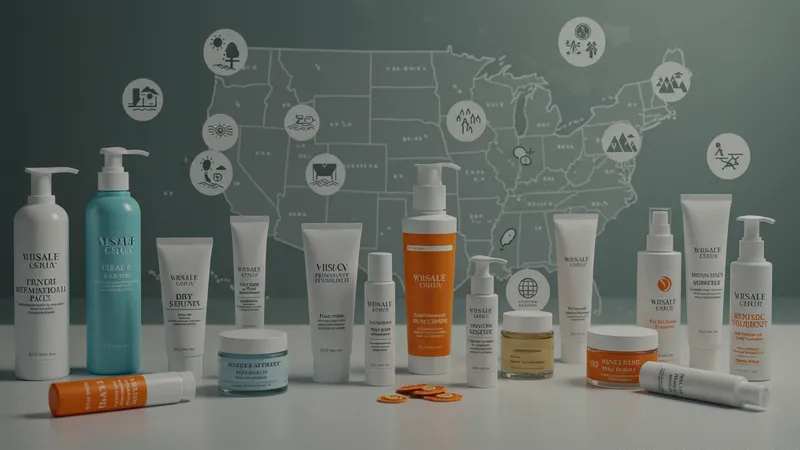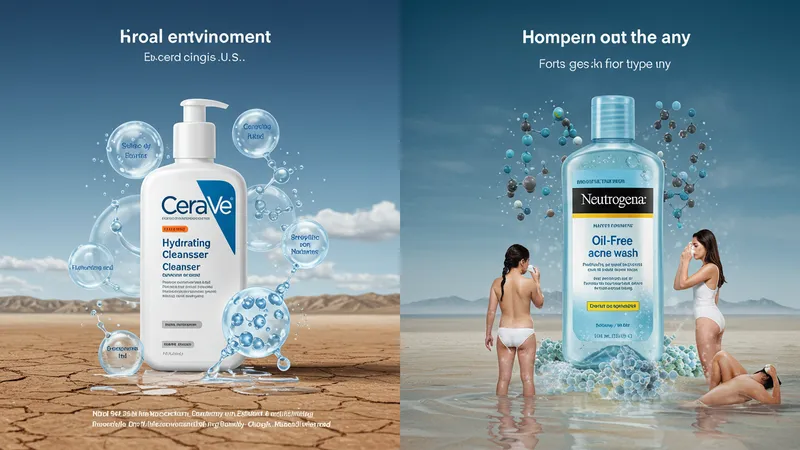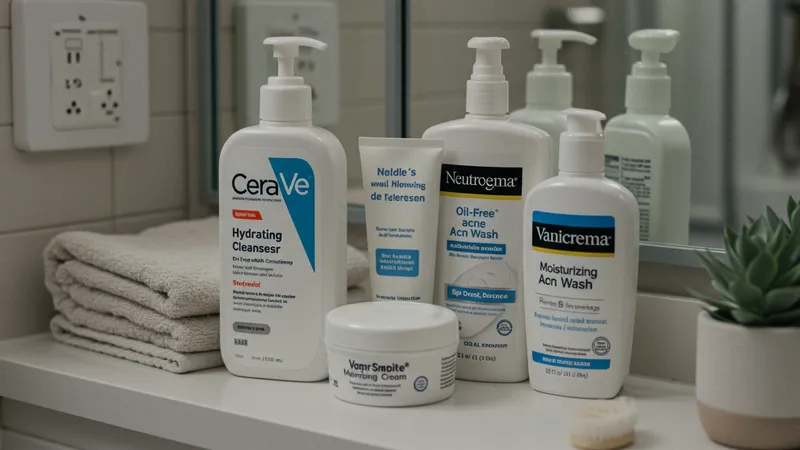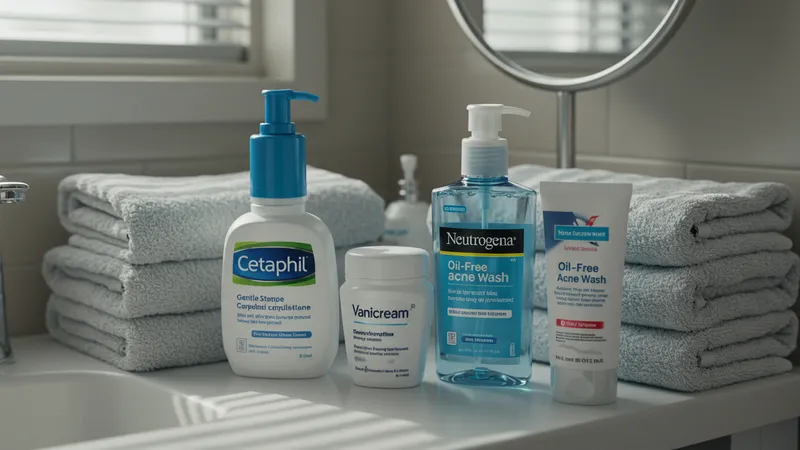

When exploring the world of skincare, one crucial concept emerges: selecting products based on skin type. This approach is about understanding that every person’s skin has distinct needs—oily, dry, combination, sensitive, or normal—and that each skin type responds differently to various ingredients and formulations. By comparing skincare products with these variations in mind, consumers can make informed decisions that optimize both product performance and skin health.
In the United States, beauty enthusiasts are increasingly drawn toward a personalized skincare regimen. The flood of new products on the market makes it essential to compare cleansers, moisturizers, serums, and sunscreens by how well they suit a specific skin type. Factors like climate, pollution, and lifestyle habits in the U.S. further influence which products perform best for different demographics and regions.

The competitive U.S. market provides hundreds of options, making it challenging to decipher which products deserve a place in someone’s regimen. Each product listed above is a top performer, known for serving a specific skin type exceptionally well—demonstrating how tailoring skincare can drive better results. For example, while Cetaphil’s cleanser is lauded for its gentleness, it may not suffice for those needing stronger exfoliation, whereas Neutrogena’s acne wash addresses excess oil but could feel harsh on dry complexions.
Brand reputation and dermatologist backing are especially influential in the U.S. Among the selections, CeraVe stands out due to its ceramide content, which aligns well with American dermatologists' emphasis on repairing and maintaining the skin barrier. Meanwhile, Vanicream’s minimalist ingredient list appeals to those seeking to avoid common irritants found in standard drugstore brands.
The pricing of these U.S.-based products reflects accessibility, most falling below $20—a sweet spot that encourages experimentation without major financial commitment. This contrasts with luxury skincare, where high prices can deter consumers from trying formulations tailored to their skin type. Drugstore brands, conversely, make adaptability affordable for a wide American audience.
Importantly, the effectiveness of a skincare product is not absolute but relative to the user. Many Americans report that pairing a gentle cleanser with a skin-type-specific moisturizer improves skin comfort and appearance noticeably. For example, someone with oily skin might pair the Neutrogena cleanser with a lightweight, oil-free moisturizer, reaping maximized benefits from both.
By focusing on skin type, American consumers don’t just follow trends—they select products that truly work for their unique profiles. The deeper details reveal even more valuable insights ahead, including how formulations, ingredient sourcing, and dermatologist recommendations shape the landscape of skincare comparisons in the United States.
When examining skincare for various skin types in the United States, ingredients are a pivotal factor. For instance, products targeting dryness, such as CeraVe Hydrating Facial Cleanser, frequently incorporate hydrating components like hyaluronic acid and ceramides. These ingredients help lock in moisture and restore the skin’s barrier, which is essential for those in drier U.S. climates or with naturally dehydrated skin.

For oily or acne-prone skin, U.S. consumers often turn to products featuring salicylic acid or benzoyl peroxide. Neutrogena Oil-Free Acne Wash, for example, uses salicylic acid to clear pores and control oil. This strategy is effective for many Americans who deal with humidity and heat, particularly in southern states, where excess oil production can lead to frequent breakouts.
Products designed for sensitive or allergy-prone skin, such as Cetaphil Gentle Skin Cleanser and Vanicream Moisturizing Cream, prioritize minimalism. By excluding fragrances, dyes, and parabens, these items are structured to minimize irritation—a concern especially common among U.S. consumers exposed to environmental stressors or pollution in urban areas.
Sun protection is another ingredient focus for Americans. PURITO Centella Green Level Unscented Sun is notable for its use of chemical and physical filters suited for sensitive skin types, reflecting a trend among U.S. users to prioritize non-comedogenic, reef-safe, and fragrance-free sunscreens. Consumers are becoming more discerning, reading labels, and seeking ingredient transparency before committing to a purchase.
Research within the United States shows a marked preference for products that deliver targeted results. Many American shoppers gravitate toward brands like Cetaphil and CeraVe, recognizing their focus on dermatologist-developed formulas. Surveys indicate these companies consistently rank among the top for consumer trust, with families and individuals of all ages placing value on simplicity and proven effectiveness.

The surge in online reviews and social media conversations further guides U.S. consumer behavior. For example, TikTok and YouTube influencers often compare the performance of Neutrogena Oil-Free Acne Wash versus other acne solutions, creating a feedback loop that bolsters product reputation and influences retail trends across the country.
Accessibility is another cornerstone of American purchasing habits. Most products highlighted in the initial list are widely available in major drugstores, supermarkets, and online platforms nationwide. This widespread availability ensures that, regardless of geography, individuals can access products catering precisely to their skin type.
Eco-conscious and allergen-sensitive consumers are driving demand for fragrance-free and minimal-ingredient products. Vanicream Moisturizing Cream has carved a niche in this space by providing clarity on every ingredient and obtaining endorsements from national allergy organizations. This transparency reassures users who need to avoid potential irritants and maintain peace of mind about what goes onto their skin.
Comparing skincare items for different skin types isn't just a one-time decision; it’s an ongoing evaluation. In the United States, clinical studies and consumer reports emphasize that regular use of a skin-type-appropriate regimen leads to better skin texture and appearance over time. Dermatologist-endorsed solutions, like CeraVe Hydrating Facial Cleanser for dry skin or Neutrogena Oil-Free Acne Wash for oily types, often receive positive reviews on improvements in skin comfort and clarity after consistent use.

Long-term effectiveness is closely tied to ingredient stability and formulation. For example, American users report that Vanicream Moisturizing Cream maintains its soothing benefits over prolonged use, whereas some fragranced products may lead to irritation after several weeks. These findings guide many to favor formulas that avoid common triggers.
User satisfaction with sun care, such as PURITO Centella Green Level Unscented Sun, remains high in the U.S., particularly among those with combination or sensitive skin. With ongoing public health campaigns stressing sun protection, products that offer non-irritating SPF gain traction for their simplicity and reliable defense.
Interestingly, a trend is emerging where American consumers alternate between products depending on seasonal needs—switching to richer creams like Vanicream in winter or lighter gels in summer. This reflects a nuanced understanding that skin type is not static, and effective skincare comparisons require an adaptable approach to maintain lasting results.
U.S. dermatologists commonly recommend matching skincare products to specific skin concerns and conditions rather than following generic routines. For sensitive and allergy-prone users, experts highlight brands like Cetaphil and Vanicream for their gentle profiles. These are especially advisable after cosmetic procedures or during reactive skin episodes, underscoring a targeted and careful approach.

For individuals dealing with acne or excess oil, healthcare providers in the United States frequently mention Neutrogena Oil-Free Acne Wash as part of routines alongside non-comedogenic moisturizers. Such guidance prioritizes formulas that won’t clog pores or trigger further breakouts, and caters directly to the humid or urban environments found throughout the country.
Sun protection receives heightened attention among U.S. dermatologists, who often recommend fragrance-free, broad-spectrum SPFs like PURITO Centella Green Level Unscented Sun for patients prone to irritation. With increasing awareness of skin cancer rates and photodamage, individualized sun care is a top-line defense for diverse skin types.
In sum, expert voices in the U.S. lean toward simplifying routines with focused, skin-type-driven product selection. This streamlines the decision process, elevates comfort, and inspires confidence among consumers seeking results. The right product pairing, tailored for each skin type, is now the gold standard for building a routine that evolves with personal needs and modern American lifestyles.